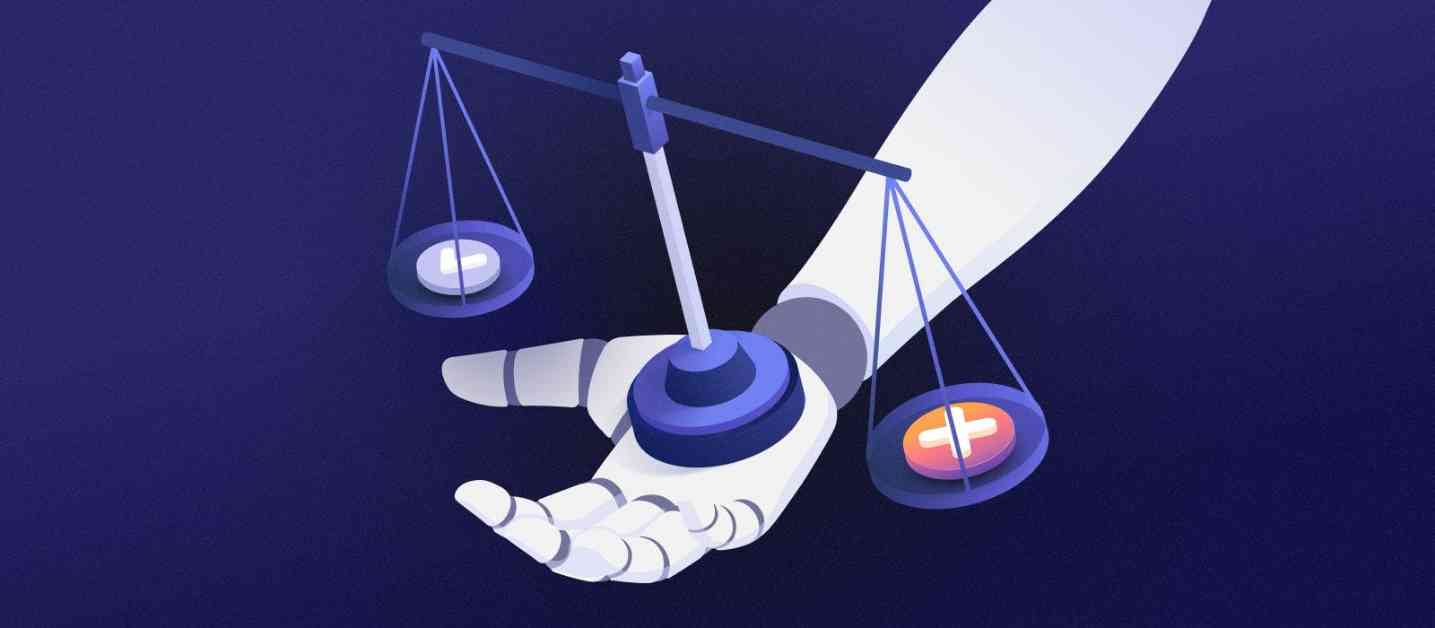Navigating Bias in AI: Challenges and Solutions in Reinforcement Learning and Human-Friendly AI
As artificial intelligence (AI) becomes increasingly integrated into various aspects of our daily lives, the issue of bias in AI systems has taken on heightened importance. One approach to address this concern is Reinforcement Learning from Human Feedback (RLHF), which enables AI models to better align with human values by learning from the feedback provided by humans. However, the implementation of RLHF poses its own set of challenges, particularly in terms of the potential for bias to be introduced into the system. In this article, we will delve into the complexities of bias in RLHF, exploring how it can manifest and discussing strategies to mitigate its impact.
Understanding Bias in Human Feedback
Human evaluators are at the core of the RLHF process, providing feedback that shapes the behavior of the AI model. However, human feedback is inherently subjective, influenced by cultural perspectives, personal experiences, and individual biases. For example, two evaluators from different cultural backgrounds may offer contrasting feedback on the same model output, leading to inconsistencies in the training data. If left unchecked, these subjective judgments can introduce biases into the AI model, skewing it towards reflecting the viewpoints of the evaluators rather than a more balanced perspective.
In addition to subjective judgments, human feedback can also be inconsistent, particularly when it comes to subjective matters. What one person perceives as appropriate or correct may differ significantly from another individual’s opinion. This inconsistency can confuse the AI model, resulting in unpredictable outputs or the reinforcement of biased behaviors. If the feedback received by the model is too varied, it may struggle to discern a clear, unbiased pattern, hindering its learning process.
Moreover, bias in AI models often originates from biased training data. When utilizing RLHF, if the training data already contains biases, there is a risk that human feedback will inadvertently reinforce these biases rather than correcting them. For instance, if the model’s outputs reflect gender stereotypes and human evaluators unknowingly perpetuate these patterns, the RLHF process can amplify these biases, entrenching them further in the model’s behavior.
Strategies to Mitigate Bias in RLHF
Diverse and Representative Feedback
One effective way to mitigate bias in RLHF is to ensure that the feedback comes from a diverse group of evaluators. This diversity should encompass individuals from various backgrounds, cultures, and perspectives, providing a more comprehensive set of inputs. By incorporating a wide range of experiences, the feedback is more likely to encompass a broad spectrum of views, helping to counterbalance individual biases and fostering a more representative model.
Bias Audits and Feedback Calibration
Regular bias audits are crucial for identifying and addressing potential biases in the feedback process. By systematically reviewing the types of feedback provided and calibrating them against known biases, developers can reduce the risk of introducing or amplifying bias in the AI model. This calibration may involve adjusting the weight of certain feedback or implementing corrective measures when bias is detected. By conducting regular audits, developers can ensure that the feedback process remains in line with ethical standards and promptly address any biases that arise.
Feedback on Bias-Sensitive Tasks
Certain tasks are more susceptible to bias, particularly those involving sensitive topics such as gender, race, or cultural references. Special attention should be paid to these areas by carefully curating human feedback or implementing additional layers of oversight. For example, tasks that involve decision-making in hiring or law enforcement should undergo heightened scrutiny to prevent biased outcomes.
Complementary Approaches to Bias Mitigation
Adversarial Training
Adversarial training can be employed alongside RLHF to combat bias in AI models. This approach involves training the model to perform effectively even in the presence of biased or adversarial inputs. By exposing the model to challenging scenarios during training, it becomes more resilient and less prone to learning or replicating biased behaviors.
Bias Detection Tools
Integrating bias detection tools into the RLHF process serves as an additional safeguard against bias. These tools can analyze model outputs in real-time, flagging any biased patterns that emerge. By incorporating such tools, developers can ensure that human feedback aligns with ethical guidelines and preemptively mitigate harmful biases before they become ingrained in the model.
Transparency and Explainability
Understanding the Decision-Making Process
Transparency and explainability play a pivotal role in identifying and mitigating bias in AI models. By enhancing the transparency of the model’s decision-making process, developers can pinpoint where biases might enter the system. Explainable AI techniques enable developers to comprehend and refine the RLHF process, minimizing potential biases. This transparency also fosters trust among users, allowing them to grasp the rationale behind the model’s decisions.
Human-AI Collaboration
Human oversight is essential for detecting biased patterns during the RLHF process. However, it is crucial to approach this collaboration with an awareness of the potential for human biases. While human reviewers can aid in identifying and rectifying biased outputs, their input must be managed carefully to prevent introducing additional biases into the model.
Sample Python Codebase for Bias Mitigation in RLHF
To underscore the concept of addressing bias in Reinforcement Learning from Human Feedback (RLHF), we will present a sample Python codebase showcasing how to integrate feedback collection, bias detection, and mitigation strategies within a reinforcement learning pipeline. The code will encompass various components, including:
Differentiated Feedback for Multiple Agents
We will incorporate multiple AI agents receiving feedback from diverse simulated human users, each with their biases.
“`python
import numpy as np
# Define multiple users with different biases
def user_feedback(output, bias_level):
# Bias level influences the likelihood of positive feedback
if output == “positive result”:
return np.random.choice([1, 0], p=[bias_level, 1 – bias_level])
elif output == “negative result”:
return np.random.choice([1, 0], p=[1 – bias_level, bias_level])
else:
return np.random.choice([1, 0], p=[0.5, 0.5])
# Simulate feedback from multiple users
users_bias_levels = [0.9, 0.7, 0.5, 0.3, 0.1] # Different biases for each user
model_outputs = [“positive result”, “negative result”, “neutral result”]
# Collect feedback from each user
user_feedback_data = []
for bias_level in users_bias_levels:
feedback = [user_feedback(output, bias_level) for output in model_outputs]
user_feedback_data.append(feedback)
print(“User Feedback Data:”, user_feedback_data)
“`
Deep Q-Learning (DQN)
We will utilize a deep neural network to approximate the Q-values for a more intricate decision-making process.
“`python
import torch
import torch.nn as nn
import torch.optim as optim
# Define the DQN model
class DQN(nn.Module):
def __init__(self, input_dim, output_dim):
super(DQN, self).__init__()
self.fc1 = nn.Linear(input_dim, 64)
self.fc2 = nn.Linear(64, 64)
self.fc3 = nn.Linear(64, output_dim)
def forward(self, x):
x = torch.relu(self.fc1(x))
x = torch.relu(self.fc2(x))
return self.fc3(x)
# Initialize DQN and training components
input_dim = 3 # Number of possible states (outputs)
output_dim = len(actions)
dqn = DQN(input_dim, output_dim)
optimizer = optim.Adam(dqn.parameters())
loss_fn = nn.MSELoss()
# Convert model outputs to a numerical state representation
state_mapping = {“positive result”: 0, “negative result”: 1, “neutral result”: 2}
# Training loop for Deep Q-Learning
for episode in range(100):
state = state_mapping[“positive result”] # Initial state
state_tensor = torch.tensor([state], dtype=torch.float32)
# Choose action
q_values = dqn(state_tensor)
action_index = torch.argmax(q_values).item()
action = actions[action_index]
# Simulate reward based on feedback
reward = sum([user_feedback_data[i][action_index] for i in range(len(users_bias_levels)]) / len(users_bias_levels)
next_state = state_mapping[“neutral result”] # For simplicity
# Calculate target and loss
next_state_tensor = torch.tensor([next_state], dtype=torch.float32)
next_q_values = dqn(next_state_tensor)
target = reward + 0.95 * torch.max(next_q_values).item()
optimizer.zero_grad()
loss = loss_fn(q_values[action_index], torch.tensor([target], dtype=torch.float32))
loss.backward()
optimizer.step()
print(f”Episode {episode}, Loss: {loss.item()}”)
“`
Advanced Bias Detection with Machine Learning Models
We will train a machine learning model to detect bias based on the feedback data.
“`python
from sklearn.ensemble import RandomForestClassifier
from sklearn.model_selection import train_test_split
from sklearn.metrics import classification_report
# Prepare dataset for bias detection
feedback_flat = [item for sublist in user_feedback_data for item in sublist]
labels = [0 if i < len(model_outputs) * 0.5 else 1 for i in range(len(feedback_flat)] # Simulate binary labels
# Train a model to detect bias
X_train, X_test, y_train, y_test = train_test_split(feedback_flat, labels, test_size=0.3, random_state=42)
bias_detector = RandomForestClassifier(n_estimators=100, random_state=42)
bias_detector.fit(np.array(X_train).reshape(-1, 1), y_train)
# Test the model
y_pred = bias_detector.predict(np.array(X_test).reshape(-1, 1))
print(classification_report(y_test, y_pred))
```
Bias Mitigation using Counterfactual Fairness
We will apply a counterfactual fairness approach to adjust the feedback and ensure fairness across different user groups.
“`python
# Counterfactual Fairness Adjustments
def apply_counterfactual_fairness(feedback, bias_level, target_level=0.5):
# Adjust feedback to align with a fair target bias level
adjusted_feedback = []
for fb in feedback:
if fb == 1 and bias_level > target_level:
adjusted_feedback.append(np.random.choice([1, 0], p=[target_level, 1 – target_level]))
elif fb == 0 and bias_level < target_level:
adjusted_feedback.append(np.random.choice([1, 0], p=[1 - target_level, target_level]))
else:
adjusted_feedback.append(fb)
return adjusted_feedback
# Apply fairness adjustment to each user's feedback
fair_user_feedback_data = [apply_counterfactual_fairness(user_feedback_data[i], users_bias_levels[i]) for i in range(len(users_bias_levels))]
print("Fair User Feedback Data:", fair_user_feedback_data)
```In conclusion, the risk of bias in AI systems, particularly in RLHF, underscores the significance of implementing robust strategies to mitigate bias. By incorporating diverse feedback, conducting bias audits, and deploying complementary bias mitigation approaches, developers can create AI systems that are more ethical, fair, and aligned with human values. By actively addressing bias challenges in AI, we can strive towards a future where AI reflects the best of human values, free from harmful biases.






















